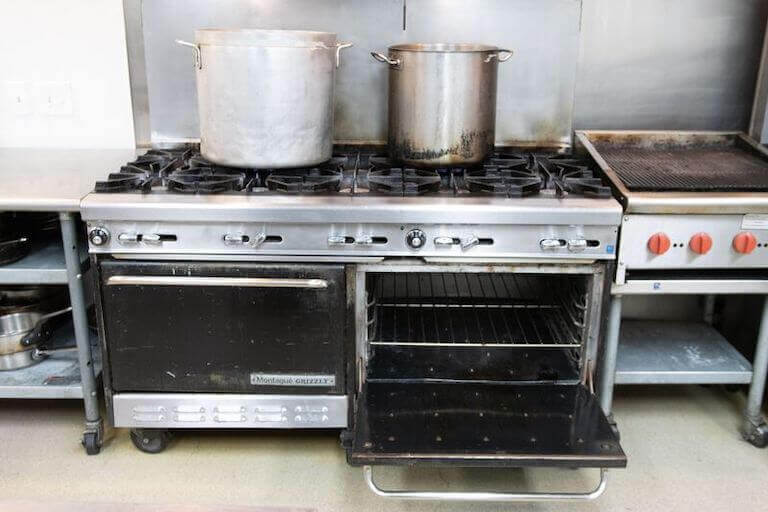If you’re thinking about opening a vegetarian or vegan restaurant, you’ll be riding a wave that’s much more than a ripple – last year 6% of US consumers reported they followed a vegetarian diet and another 5% said they ate vegan. However, appealing to this pool of consumers is just one part of opening a successful restaurant.
In this article, we give you several key things to consider when opening a vegetarian, vegan, or plant-based restaurant or café. We’ll describe how to research your idea, connect with local partners, find an ideal space, and more.
1. Gain Necessary Knowledge in Plant-Based Cuisine
Even if you’re a pro at cranking out vegetarian dinners for your family or baking vegan cupcakes for your friends, you may not know how to scale recipes or handle the business aspects of opening a restaurant.
What Are the Differences Between Vegetarian, Vegan, and Plant-Based?
While these three diets often get lumped together, each has a unique definition.
Vegetarian: A diet that includes no meat, but may include animal products like milk and eggs
Vegan: A diet that includes no animal products, including meat, eggs, dairy, and honey
Plant-Based: A diet that prioritizes plant-based ingredients like vegetables, grains, and nuts; may or may not include animal products
So before you dive into an endeavor as big as opening a restaurant, it can be helpful to develop a solid foundation in both culinary arts and business.
“I’ve been so inspired to re-create flavors and textures with plant-based ingredients, as well as use the advanced techniques I’m learning to elevate plant-based cuisine.”*
Shane Witter Hicks, Escoffier Boulder Graduate & Private Chef/Educator, The Soulful Spread
Obtaining an education in Plant-Based Culinary Arts can improve your cooking skills as well as introduce you to concepts like purchasing, plant-based menu design, government regulations, and foodservice management. After you explore these areas, you may have the opportunity to learn and practice new skills in a restaurant or other business during a culinary externship.
2. Develop Your Vegan or Vegetarian Restaurant Concept
While one thing’s for sure – that your restaurant won’t serve meat – a plant-based restaurant can still take on many different forms. Therefore, you should develop a clear idea of the type of dishes your restaurant will serve and the people you hope to attract.
Perhaps you’re envisioning a mixture of vegetarian salads and grain bowls that rotate with the seasons, depending on the availability of local produce. Or maybe you hope to create vegan renditions of classic dishes like hamburgers and spaghetti and meatballs.

Along with thinking about what type of food your restaurant will serve, consider the service style and size. Do you envision a fast casual plant-based cafe with a walk-up window and seating for 20? Or are you striving to open a fine-dining vegan farm to table restaurant that can accommodate 60 guests at once? Nailing down these details ahead of time can simplify the property search process.
No matter what you aim to serve, it’s important to research industry trends. For example, many consumers exploring plant-based options are looking for foods that mimic the flavors they’re already used to… especially meat and dairy. According to Markets and Markets, the global plant-based meat category is expected to grow to $15.7 billion in 2027. By staying on top of these trends, you may be able to attract more customers.
3. Explore Potential Partnerships with Plant-Based Food Entrepreneurs
As you research your vegan or vegetarian restaurant idea, it’s important to ask, “Where do plant-based food consumers already shop locally, and what products are they buying?” A low-cost way to research opportunities, find potential partnerships, and interact with your target customers could be visiting your local natural foods grocer or farmers’ market.
By regularly visiting these arenas, you’ll not only become familiar with what customers want, but you can also meet future partners.
Forming relationships with vegetable farmers and owners of local plant-based meat companies before you open your restaurant can help set the foundation for solid partnerships. As opening gets closer, you can reach out to these community members and see if they’d be interested in supplying you with ingredients.
4. Consider Ingredient Costs and Profit Margin
When you’re looking into suppliers, take note of ingredient costs. Since vegan and vegetarian diets often go hand-in-hand with organic and/or local products, you may end up paying more money per pound for common ingredients than you would if you order from a large supplier like Sysco.
“Plants are far more than a side dish. More and more people are demanding it. It’s our job as experts in the culinary world to meet the consumer where they’re at, not just to do it selfishly of what we want to serve, but what people want.”*
Chad Sarno, Co-founder of Wicked Healthy and Gathered Foods, Author of Crazy Sexy Kitchen
In general, restaurants aim for a 25% or higher profit margin per dish. When you’re writing the business plan for your restaurant, you’ll have to factor in these possibly higher food costs, in addition to your lease, insurance, kitchen equipment, décor, and marketing budget.
5. Search for a Location
No matter what enterprise you’re launching – a vegan bakery, a coffee shop, or a plant-based café – always take time to research the market before choosing the location. Will it be a walk-up venue in an area with lots of foot traffic? Is there ample parking if you’re off-the-beaten-track? How will you draw people to your restaurant?
Along with considering where the space is located, you’ll also need to see whether it fits in with your vision and needs. For example, does it come equipped with a walk-in cooler? If not, is there room to add one? Is the floorplan fine as-is, or will you need to make major renovations? By answering these questions, you’ll be able to more accurately estimate your expenses.

6. Secure Funding for Operating Expenses
Let’s face it – opening a restaurant isn’t cheap. You’ll need money to lease your space, complete any necessary renovations, buy equipment, and handle ongoing operating expenses like utilities and labor costs. When you add all of these together, you’re looking at startup costs that could run between $175,500 and $750,000.
To cover these costs, it’s wise to look into multiple sources of funding, including bank loans, grants, and private investors. Remember that many people are passionate about veganism and plant-based eating, so don’t overlook funding from animal rights and wellness groups and individuals.

Take the Culinary Career Survey
We’ve compiled a checklist of all of the essential questions into one handy tool: career options, culinary interest surveys, educational opportunities, and more.
7. Obtain Permits and Licenses
Before you open your restaurant, you’ll need to get all your legal ducks in a row. Many times, this means multiple trips or phone calls to your city planning department and local health department. While exact requirements vary by location, you may need to obtain a business license, certificate of occupancy, liquor license, and more.
“A student who graduates from Escoffier can be able to participate in much better culinary conversations and understand a lot more about not just cooking, but how a business is run.”*
Chef Jesper Jonsson, Chef Instructor
While you can navigate these necessary steps on your own, don’t be afraid to reach out for help. Many cities have a small business association or entrepreneurship center that may be able to help you nativagate legalities. Plus, these places can often introduce you to valuable business mentors.
Another option is to reach out to a lawyer who specializes in small businesses. They can help ensure that you are doing everything by the books and answer any of your burning questions.
8. Purchase Necessary Equipment and Decor
Once you’ve secured your space, it’s time to make it your own!
If the space doesn’t already come with kitchen equipment, figure out what you’ll need. Some things you may need to purchase include an oven, walk-in refrigerator, flat top, fryer, and a commercial dishwasher.

Along with setting up your kitchen space, you’ll also need to put time into crafting a dining space that matches the vibe you’re striving for. While you can select whatever decor you’d like, keep in mind that many people interested in plant-based eating are also interested in sustainability. Therefore, you may want to consider furnishing your space with antiques, second-hand items, or sustainable options like hemp tablecloths and recycled wood tabletops.
You can also consider making your space more than just a place that serves meals. Your diners may be open to purchasing other eco-friendly products – shopping bags, cookbooks, and locally-made artisan items. A dedicated retail space means that you may have an opportunity to generate even more revenue, either on a consignment basis or through small investments, while supporting your plant-based friends and the community at large.
Start With Confidence
If starting a vegetarian or vegan restaurant feels a bit overwhelming, we feel you! However, it becomes more manageable when you take it one step at a time.
By starting your journey with a plant-based education, you can gain momentum to chase your dreams.
To learn more about food entrepreneurship, read these next:
- How Many Employees Does it Take to Run a Restaurant?
- Positioning Statements for Restaurant Marketing
- 4 Roadmaps to Becoming a Food Entrepreneur
*Information may not reflect every student’s experience. Results and outcomes may be based on several factors, such as geographical region or previous experience.
This article was originally published on March 16, 2020, and has since been updated.

 “I’ve been so inspired to re-create flavors and textures with plant-based ingredients, as well as use the advanced techniques I’m learning to elevate plant-based cuisine.”*
“I’ve been so inspired to re-create flavors and textures with plant-based ingredients, as well as use the advanced techniques I’m learning to elevate plant-based cuisine.”* “Plants are far more than a side dish. More and more people are demanding it. It’s our job as experts in the culinary world to meet the consumer where they’re at, not just to do it selfishly of what we want to serve, but what people want.”*
“Plants are far more than a side dish. More and more people are demanding it. It’s our job as experts in the culinary world to meet the consumer where they’re at, not just to do it selfishly of what we want to serve, but what people want.”* “A student who graduates from Escoffier can be able to participate in much better culinary conversations and understand a lot more about not just cooking, but how a business is run.”*
“A student who graduates from Escoffier can be able to participate in much better culinary conversations and understand a lot more about not just cooking, but how a business is run.”*